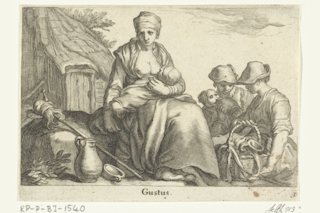Update: There was a major coding error. I've rerun the analysis. No qualitative change. As is often the case a 10 minute post using the General Social Survey is getting a lot of attention. Apparently circa 1997 web interfaces are so intimidating to people that extracting a little data goes a long way. Instead of talking and commenting I thought as an exercise I would go further, and also be precise about my methodology so that people could replicate it (hint: this is a chance for readers to follow up and figure something out on their own, instead of tossing out an opinion I don't care about). Just like below I limited the sample to non-Hispanic whites after the year 2000. Here's how I did it: YEAR(2000-*), RACE(1), HISPANIC(1) Next I want to compare income, with 1986 values as a base, with party identification. To increase sample sizes I combined all Democrats and Republicans into one class; the social science points to the reality that the vast majority of independents who "lean" in one direction are actually usually reliable voters for that party. So I feel no guilt about this. I suppose Americans simply like the conceit of being independent? I know I do. In any case, here are the queries: For row: REALINC(r:0-20000"LLM";20000-40000"M";40000-80000"UM";80000-*"BU") For column: PARTY(r:0-2"Dem";3"Ind";4-6"Rep") What I'm doing above is combining classes, and also labeling. The GSS has documentation to make sense of it if you care. Some of you were a little confused as to what $80,000 household income in 1986 means. I went and converted 1986 dollars to dollars today.
As you can see $80,000 in 1986 would be $166,000 today. So what percentile in household income is $166,000? Here it is (I rounded generously, so it is really 43 or 93 and such, instead of 40 or 95):
Value of income conversion
19862012
$20,000$42,000
$40,000$83,000
$80,000$166,000
To clear up future confusions I have relabeled the income ranges with the descriptive classes above. You can argue all you want that being in the ~5% of income is not upper class, but just pretend I used a different term (e.g., higher middle class?). I'm not too hung up on the terminology, I'm more focused on the people in the top 5% of the income distribution. The local doctor or successful business person, not the billionaire who owns an island in the Caribbean. Now you have a sense of the classes which we'll be looking at. In the results below I report the proportions of the row and column values. So the leftmost three columns will tell you the percentage of Democrats who are upper class, while the rightmost three columns will tell you the percentage of upper class people who are Democrats. The leftmost three columns add up to 100% vertically, the rightmost three columns 100% horizontally. The second major aspect of reading the table below is that I "controlled" for various sets of characteristics. So, for example, you see the income and party identification patterns for those with no college education, and those with college educations. Here are the variables: DEGREE(r:0-2"No College";3-4"College"), BIBLE, REGION(r:1-4,8-9"Not South";5-7"South"), SEI Two notes here. First, I used the Census division categories. Second, the "socioeconomic status index" is more than just income, and I created three broad classes, giving you the percentile ranges.
Income rangeQuantitative classDescriptive class
Up to $20,000< 40%Lower & Lower Middle (LLM)
$20,000 to $40,00040% to 70%Middle (M)
$40,000 to $80,00070% to 95%Upper Middle (UM)
$80,000 and up> 95%Broad Upper (BU)
Columns = 100%Rows = 100%
DemIndRepDemIndRep
LLM425133402433
M282728371845
UM211627351353
BU8611341155
No College
DemIndRepDemIndRep
LLM515539392635
M292731362044
UM161424311653
BU436281557
College
DemIndRepDemIndRep
LLM242819451342
M252824421147
UM32253540835
BU19192238953
Bible is Word of God
DemIndRepDemIndRep
LLM636139352244
M272832241659
UM101023161075
BU12571182
Bible is Inspired of God
DemIndRepDemIndRep
LLM374928412336
M312929411643
UM241729371152
BU851430862
Bible is Book of Fables
DemIndRepDemIndRep
LLM375128512928
M252224532024
UM232030501730
BU15718551134
Not the South
DemIndRepDemIndRep
LLM405028412435
M272728391843
UM231728381349
BU10611391249
The South
DemIndRepDemIndRep
LLM475433392333
M292829351748
UM181427281160
BU641223967
Bottom 50% of socioeconomic status
DemIndRepDemIndRep
LLM555944402733
M282730362341
UM141121321751
BU435341749
40% to 10% of socioeconomic status
DemIndRepDemIndRep
LLM343826401941
M313029381447
UM262431331354
BU9715281062
Top 10% of socioeconomic status
DemIndRepDemIndRep
LLM182817431443
M242724411148
UM30203440653
BU26252542948













